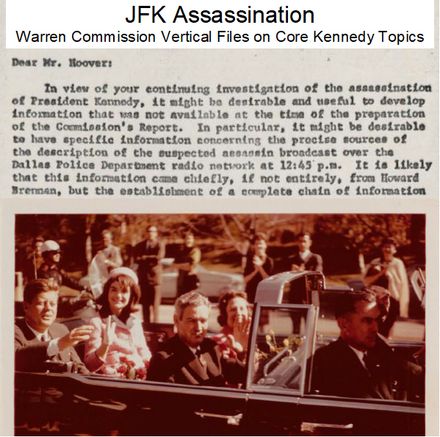$9.95
D-Day Invasion of Normandy - Operation Overlord Documents and Photos - Download
D-Day Invasion of Normandy - Operation Overlord Documents and Photos
192 pages of documents and 158 photographs covering D-Day, Operation Overlord
"D-Day" means the first day of any military operation. "D-Day" has come to mean the greatest single Allied operation of World War II, the invasion of Normandy. Contains original notes, reports, correspondences, and minutes of meetings. Photographs taken before, during, and after D-Day. The pictures were taken by Army, Marine, Navy, and Coast Guard photographers. Also included are photos taken by The Office of War Information of D-Day activity taking place in New York City.
In the spring of 1944, General Dwight D. Eisenhower, the Allied Supreme Commander in Europe, had to make one of the most important decisions of World War II. Hundreds of thousands of Allied troops, sailors, and airmen awaited his orders to begin Operation Overlord, the invasion of Europe. Eisenhower had already delayed Overlord for a month and postponed other military operations to allow the Allies enough time to build and gather together the landing craft they needed. He now set a date, June 5, 1944.
The Allied planners knew they could not control the weather for D-Day Late on the evening of June 2, 1944, Eisenhower, his top generals, and British Prime Minister Winston Churchill met to review the weather forecast. The news was not good, D-Day, June 5, promised cloudy skies, rain, and heavy seas. Eisenhower decided to wait another day to see whether the forecast might improve. Less than 24 hours before the scheduled invasion Eisenhower gathered his advisers again. The forecast indicated that the rain would stop and there would be breaks in the clouds by mid-afternoon on June 5. Eisenhower decided to change the date for D-Day to June 6.
The D-Day operation of June 6, 1944 brought together the land, air and sea forces of the allied armies in what became known as the largest invasion force in human history. The operation, given the codename OVERLORD, delivered five naval assault divisions to the beaches of Normandy, France. The beaches were given the codenames UTAH, OMAHA, GOLD, JUNO and SWORD. A great invasion force stood off the Normandy coast of France as dawn broke on 6 June 1944: 9 battleships, 23 cruisers, 104 destroyers, and 71 large landing craft of various descriptions as well as troop transports, and mine sweepers, the largest armada ever assembled. The naval bombardment that began at 0550 that morning detonated large minefields along the shoreline.
The invasion force included 7,000 ships and landing craft manned by over 195,000 naval personnel from eight allied countries. Almost 133,000 troops from England, Canada and the United States landed on D-Day. Casualties from the three countries during the landing numbered 10,300. By June 30th, over 850,000 men, 148,000 vehicles, and 570,000 tons of supplies had landed on the Normandy shores. On May 7, 1945, German General Alfred Jodl signed an unconditional surrender at Reims, France.
Highlights include:
The "Order of the Day" statement as issued to the soldiers, sailorsand airmen of the Allied Expeditionary Force on June 6, 1944
In Case of the Failure of the D-Day Operation - Following the decision for the cross channel invasion, Eisenhower wrote a press release on a pad of paper, to be used if necessary. The handwritten message by General Eisenhower, the In Case of Failure message is mistakenly dated "July" 5 instead of "June" 5.
Handwritten note from President Roosevelt to Marshal Stalin appointing Dwight Eisenhower to command Operation Overlord. General George Marshall added a note to Eisenhower on December 7, 1943.
Operation Policy Memoranda January 29, 1944 Minutes of the Supreme Commanders Allied Expeditionary Forces (SCAEF) 10th Meeting March 20, 1944
Correspondence from OSS Director William J. Donovan to President Roosevelt March 9, 1944
British Assault Area - Naval Operation Orders May 15, 1944
Memo on conditions in Normandy, June 3, 1944
Report of the Eighth Air Force Normandy Invasion June 2 - 17, 1944
Report of the Amphibious Operations Invasion of Northern France Western Task Force United States Fleet June 1944
SHAEF Incoming Message from General Eisenhower to General Marshall concerning the first reports of the Normandy landing, June 6, 1944.
Journal entries from the 16th Infantry Regiment journal, June 6-17,1944.
SHAEF Message from General Eisenhower's reporting on the D-Day landing area, June 8, 1944.
June 6 - July 8, 1944 Report of the Eighty-Second Airborn Division, "Operation Neptune," at Normandy
June 1944 After Action Report, 115th Infantry
July 21, 1944 After Action Report, Headquarters, 22nd Infantry
Debriefing Conference on D-Day, 82d Airborne Division Report, Aug 194

 Army troops on board a LCT, ready to ride across the English Channel to France. Some of these men wear 101st Airborne Division insignia.
Army troops on board a LCT, ready to ride across the English Channel to France. Some of these men wear 101st Airborne Division insignia. A U.S. Coast Guard boat rescues two survivors from the waters off Normandy, after their ship was hit
A U.S. Coast Guard boat rescues two survivors from the waters off Normandy, after their ship was hit Wounded men of the 3rd Battalion, 16th Infantry Regiment, 1st Infantry Division, receive cigarettes and food after they had stormed "Omaha" beach on "D-Day", 6 June 1944.
Wounded men of the 3rd Battalion, 16th Infantry Regiment, 1st Infantry Division, receive cigarettes and food after they had stormed "Omaha" beach on "D-Day", 6 June 1944.



